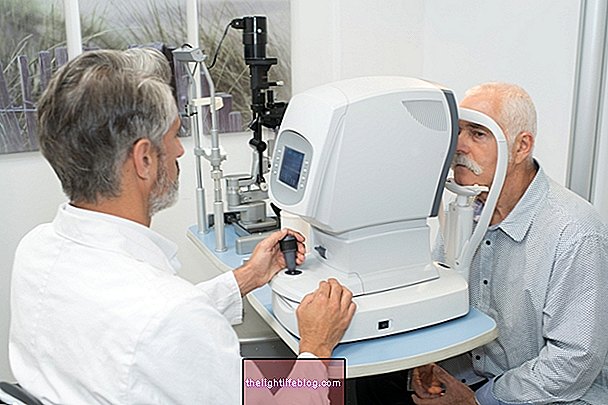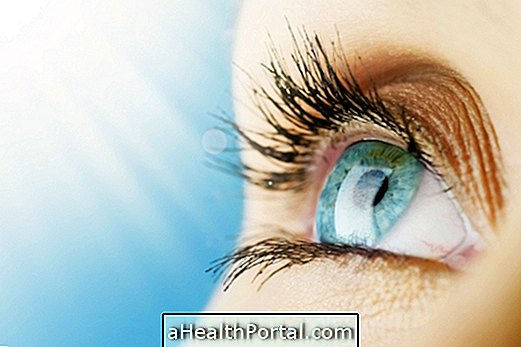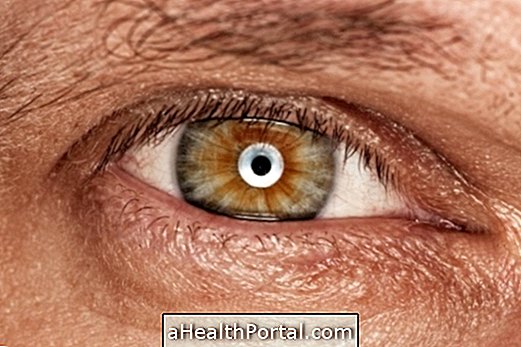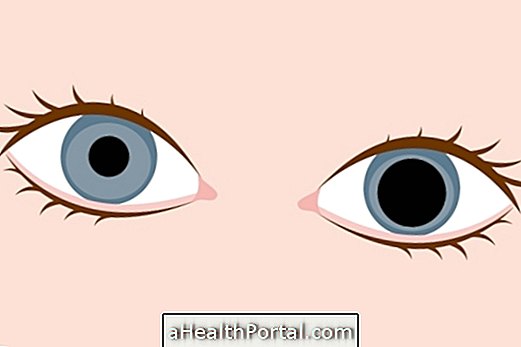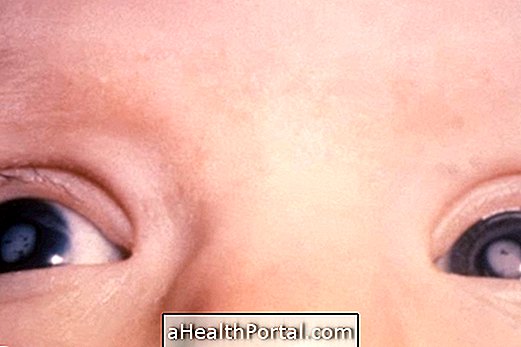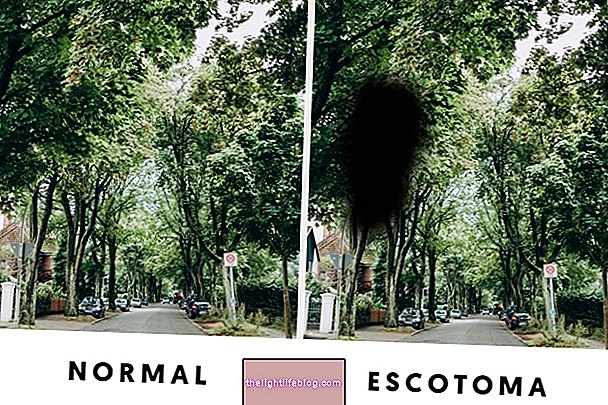Loss of vision can often be avoided because situations that lead to progressive vision loss are easily controlled by changing eating habits, wearing sunglasses, and routine eye exams that can identify any ocular problem still in the initial phase, being able to be treated and the vision preserved.
Diabetic retinopathy and macular degeneration, for example, can be easily avoided by controlling blood glucose and wearing sunglasses, respectively. In addition, it is recommended that periodic visits be made to the ophthalmologist, especially if there is a family history of loss of vision, especially when there is a history of glaucoma and cataracts.
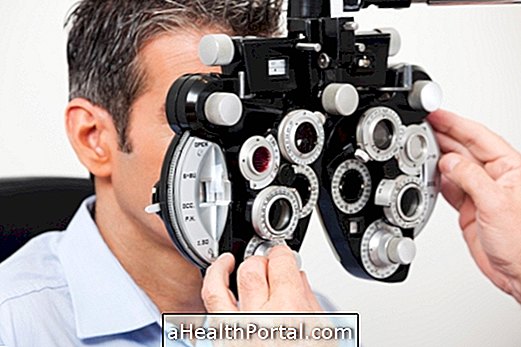
The main causes of vision loss are:
1. Cataract
Cataracts are characterized by aging of the lens of the eye, resulting in blurred vision, increased sensitivity to light and progressive loss of vision and can occur throughout life or soon after birth. Cataracts may be due to a variety of conditions, such as use of corticosteroids, eye or head aches, eye infections, and aging.
Although it may lead to loss of vision, the cataract is completely reversible through surgery, where the lens of the eye is replaced by an ocular lens. The surgery does not depend on the person's age, but on the degree of impairment of vision. Learn how the cataract surgery is done and how it is the postoperative.
How to avoid: Cataract is a difficult disease to be avoided, because the child may already be born with changes in the lens of the eye. However, it is important to go to the ophthalmologist for tests that can identify any vision problem, especially when there are symptoms of eye infection or if the person has diabetes, myopia, hypothyroidism or excessive use of medications, for example.
2. Macular Degeneration
Macular degeneration, also known as retinal degeneration, is a disease characterized by damage and wear of the retina, resulting in the gradual loss of ability to see objects clearly and the appearance of a dark area at the center of the vision. This disease is usually related to age, being more common from the age of 50, but can also happen in people who have family history, have nutritional deficiencies, are often exposed to ultraviolet light or have hypertension, for example.
How to avoid: To prevent retinal degeneration, it is important to have healthy eating habits, to avoid smoking and to wear sunglasses to protect against ultraviolet rays, and to go regularly to the ophthalmologist if you have symptoms or family history.
In some cases, depending on the degree of disease progression, the doctor may indicate treatment with laser, oral or intraocular medications, such as Ranibizumab or Aflibercept, for example. Learn more details of the treatment for macular degeneration.
3. Glaucoma
Glaucoma is a chronic disease that can lead to progressive loss of vision due to the death of optic nerve cells. Glaucoma is a silent disease, so it is important to pay attention to the onset of some symptoms, especially if there is a history of glaucoma in the family, such as decreased field of vision, eye pain, blurred or blurred vision, strong headache, nausea and vomiting.
How to avoid: Although there is no cure, vision loss due to glaucoma can be prevented by measuring eye pressure on routine eye exams. Usually when the pressure in the eye is high, a series of ocular exams are necessary to diagnose the disease and thus prevent progression. See the exams that identify glaucoma.
The treatment for glaucoma should be recommended by the ophthalmologist according to the degree of ocular involvement, and eye drops, medications, laser treatment or surgery may be recommended, which is indicated only when the other treatment options do not have the desired effect .

4. Diabetic retinopathy
Diabetic retinopathy is a consequence of elevated blood glucose levels, being more common in people with type 1 diabetes and not undergoing adequate diabetes control. Excess blood sugar can result in progressive damage to the retina and blood vessels that irrigate the eyes, resulting in blurred vision, dark spots in the vision, and progressive loss of vision.
Diabetic retinopathy can be classified according to the extent of the lesion in the eye, the most severe form being called proliferative diabetic retinopathy, which is characterized by the emergence and rupture of fragile vessels in the eyes, with haemorrhage, retinal detachment and blindness.
How to avoid: Diabetic retinopathy can be avoided from the control of glycemia that should be performed by diabetic patients according to the guidance of the endocrinologist. In addition, it is important for diabetic people to have annual eye examinations so that any ocular changes can be identified early and can be reversed.
In the case of proliferative diabetic retinopathy, the ophthalmologist may recommend performing surgical procedures to eliminate new vessels formed in the eye or stop bleeding, for example. However, it is necessary for the person to follow the guidelines of the endocrinologist for diabetes control.
5. Retinal detachment
Retinal detachment, which is characterized when the retina is not in its correct position, is a condition that needs to be treated immediately so that complete loss of vision does not occur. This can happen due to a very severe blow to the eye or head or due to inflammatory diseases or processes, causing part of the retina not to have enough blood and oxygen supply, which can result in death of the eye tissue and, consequently, blindness.
Retinal detachment is most common in people over 50 years old or who has suffered severe blows to the head and may be noticed by the appearance of small dark spots in the field of vision, sudden flashes of light, discomfort in the eye and very blurry vision, for example.
How to avoid: To avoid detachment of the retina, it is recommended that people over 50 years or who have suffered some type of accident or have diabetes, for example, have regular eye examinations so that the doctor can check if the retina is in the position.
If it is noticed that the position is changed, it is necessary to perform surgery to solve this problem and avoid blindness. Surgery is the only form of treatment for retinal detachment and the type of surgery depends on the severity of the situation, and can be performed by laser, cryopexy or injection of air or gas into the eye. Find out the indication for each type of surgery.
